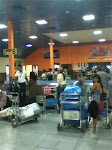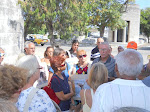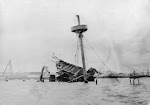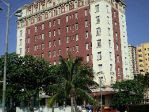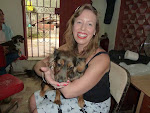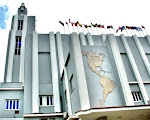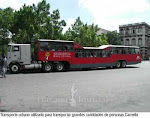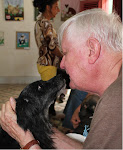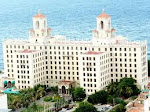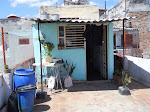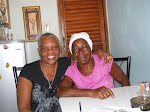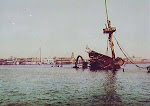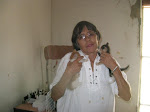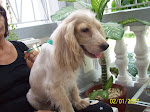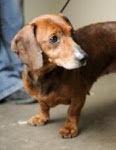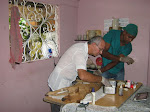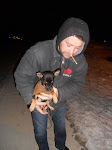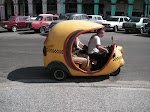Peachy
Pura Raza
Americans usually think of Cuba as having a sick economy,
lots of poverty, and few luxuries. It
seems almost incongruous that Cuba could have an active group of purebred dog
fanciers. Once a year Cuba hosts a
judged dog show attracting people from many other countries.
I too found the interest in purebreds somewhat surprising,
but in my several trips to Cuba I have met members of the Doberman and
Rottweiler clubs and the president of the Boxer club. No matter what our foregone conclusions about
Cuba might be, purebred dog fanciers abound in Cuba.
Among the 13 dogs Charlene and I have had, only three were
AKC registered purebreds, and we never had the AKC certificate on any of
them. We really didn't care about the
certificates, as it wouldn't have made any difference to us if our dogs were
registered or not. Still, as I gaze at
my study walls where each of them has a framed photo, I can see echoes of
purebred ancestors in many of them. I
use the breed names merely to describe them, not to try to distinguish their
ancestry. In the order we acquired them,
let me introduce you to them:
1. Annie
was a 15 inch Beagle who adopted us when she came up out of the Ohio River
banks to join us as we restored our old farmhouse.
2. Boy
was a perfect German Shepherd abandoned and starving. We found him living under a pile of lumber in
our barn.
3. Roscoe
looked a little like an Airedale with reddish wiry fur. Charlene found him walking the road in front
of our farm during a rainstorm.
4. Yo-yo
was a beautiful tri-color American Fox Hound who became the light of our lives.
5. Spotty
was a small bird dog like so many who bred casually on the farms in our area.
6. Pepe
was a black purebred miniature poodle, acquired from some people who ignored
and mistreated him. He lived with Charlene's
mother for years and finally came to live with us. He lived to 16 years of age.
7. Casey
was a Wheaten Terrier, possibly purebred as we got her from a Wheaten Club
rescue group.
8. Hope
was given to us by our vet. She had been
savagely attacked, causing the loss of one eye.
She had long curly scraggly fur and loved living out her life in a good
home where she was loved.
9. Velcro
was a white Cock-a Poo, as gentle as a lamb.
She was found at the bridge to our island in a rainstorm by the bridge
tender. Velcro had lung cancer when we
found her, but she stayed with us for 13 happy months.
10. Peachy
is a huge Golden Doodle, bigger at 100 pounds than any other we've had. She to delights us every day of our lives.
11. Danny
was my soul mate, a Border Collie who clearly was the smartest dog we ever
had. He was 9 when his owner died, and
we adopted him. He played catch with me
daily, and left us at age 13.
12. Princess
is half Golden Retriever and half something else. She is white with a faint touch of gold, and
she makes us laugh every day.
13. Nala,
a small mixed breed girl, perhaps with a little Dachshund in her and otherwise
of unknown provenance. Not here long,
but loved and cherished.
That's quite an inventory of love, devotion, companionship
and happiness. Most could have been
purebred judging by their looks, but few came from such fussy backgrounds. Is the list finished? I hope not, although Charlene and I have
reached an age when we need to downsize our commitments a little. I do know that if another dog joins our
family, it is highly unlikely it will come with "papers."
Les Inglis
